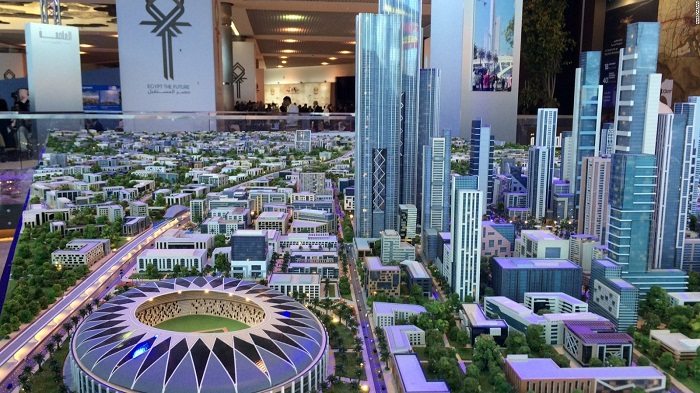New City Projects to be Sustainable

A newly announced plan to build a $4.5 billion, high-speed rail line in Egypt to service a new capital city, financed with investment from China, is the latest indicator of a recent trend in developing nations of governments throwing their hands in the air and starting from scratch to create viable, workable administrative centers.
The new rail line is part of a current effort in several cities around the world to create new, sustainable capitals and similar major new cities:
- The Egyptian project, given the clunky placeholder name New Adminstrative Capital (NAC), has been under construction since 2015, will have its own international airport, is envisioned to have a population of more than 6 million people, and has an estimated, alleged US$45 billion price tag.
- An announcement in 2019 by the Indonesian President Joko Widodo about relocating its capital from overcrowded, sinking Jakarta (located on what is by far the world's most populous island) to a new location on the much larger, more centrally located, much-less-crowded island of Borneo. So far, Widodo has said construction will begin in 2024. This project is currently budgeted at $32 billion, with 80% of it coming from private investors, according to Widodo. Prospective investors have been rumored from everywhere from the UK to the Middle East to Japan; China has not emerged as an investor for this project as of yet.
- The Eko Atlantic project in Nigeria, not a new capital city per se, but an ambitious attempt supported by the federal government to address coastal erosion concerns while providing accommodations for 250,000 people who would presumably contribute significantly to the country's ongoing economic development. Its cost is envisioned at $6 billion, with investment coming from within Nigeria.
- New Clark City in the Philippines, also not a new capital city, but another ambitious attempt (backed by $11 billion in Chinese money) to create a city of more than a million people that would relieve congestion on the stressed, overcrowded Metro Manila capital area. Its location is near the longtime military bases created by the US (and now owned by the Philippines government) in Central Luzon, about 75 miles north of Metro Manila.
Are These Projects a Good Thing?
The new cities should provide an economic net-positive for their nations, and they've been conceived as sustainable models of what modern urban planning should achieve. So no reason to throw cold water on these projects unless one has a better plan.
But...
Certainly in Egypt and Indonesia, the initiatives are an effort to sweep existing problems under the rug. Cairo and Jakarta will be just as crowded, polluted, and chaotic if and when the new capitals are completed as they are today.
Current Philippines President Rodrigo Duterte came into office committed to decentralize the country's economic dependence on Manila; New Clark City and an overall modernization and incentive programs in many cities throughout the country are in line with this commitment. But Manila, too, will remain overcrowded and troubled, its prominent Pasig River highly polluted, its dirty air often obscuring the grandeur of Manila Bay.
One thing that should concern European and North American governments and investors is the prominence of Chinese money in these projects. Funding these cities, along with the country's ambitious belt-and-road vision should make it clear that China fully plans to be the world's dominant economic power this century. China has been on pace, and remains so, to catch the US economy in terms of overall size by 2030.
This must increase the possibility of its currency (known as the yuan or RMB) replacing the US dollar as the world's “monete franca.” Those who scoff at this idea must be reminded of the UK's pound sterling dominance until that country lost its economic dominance for good after the world wars.